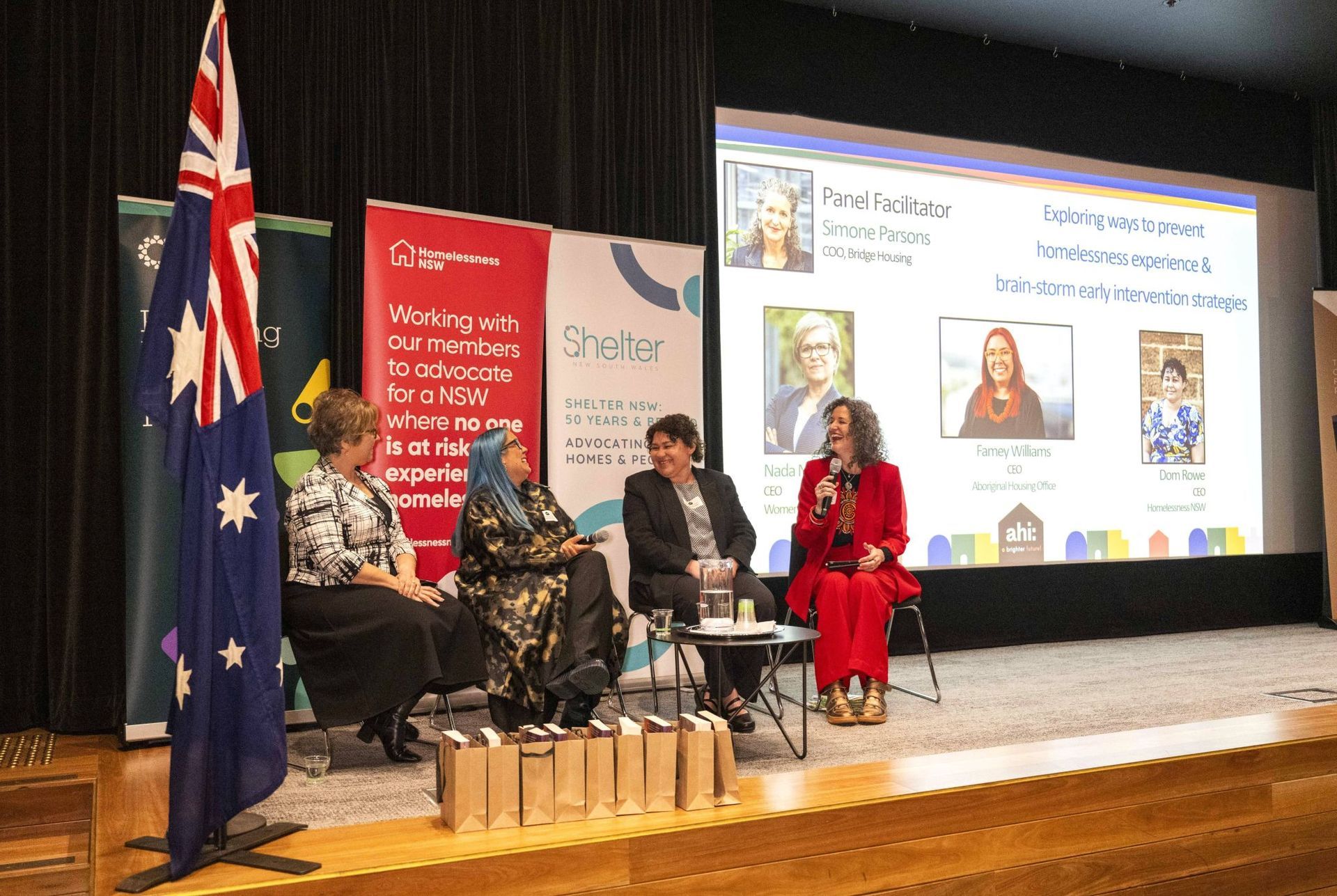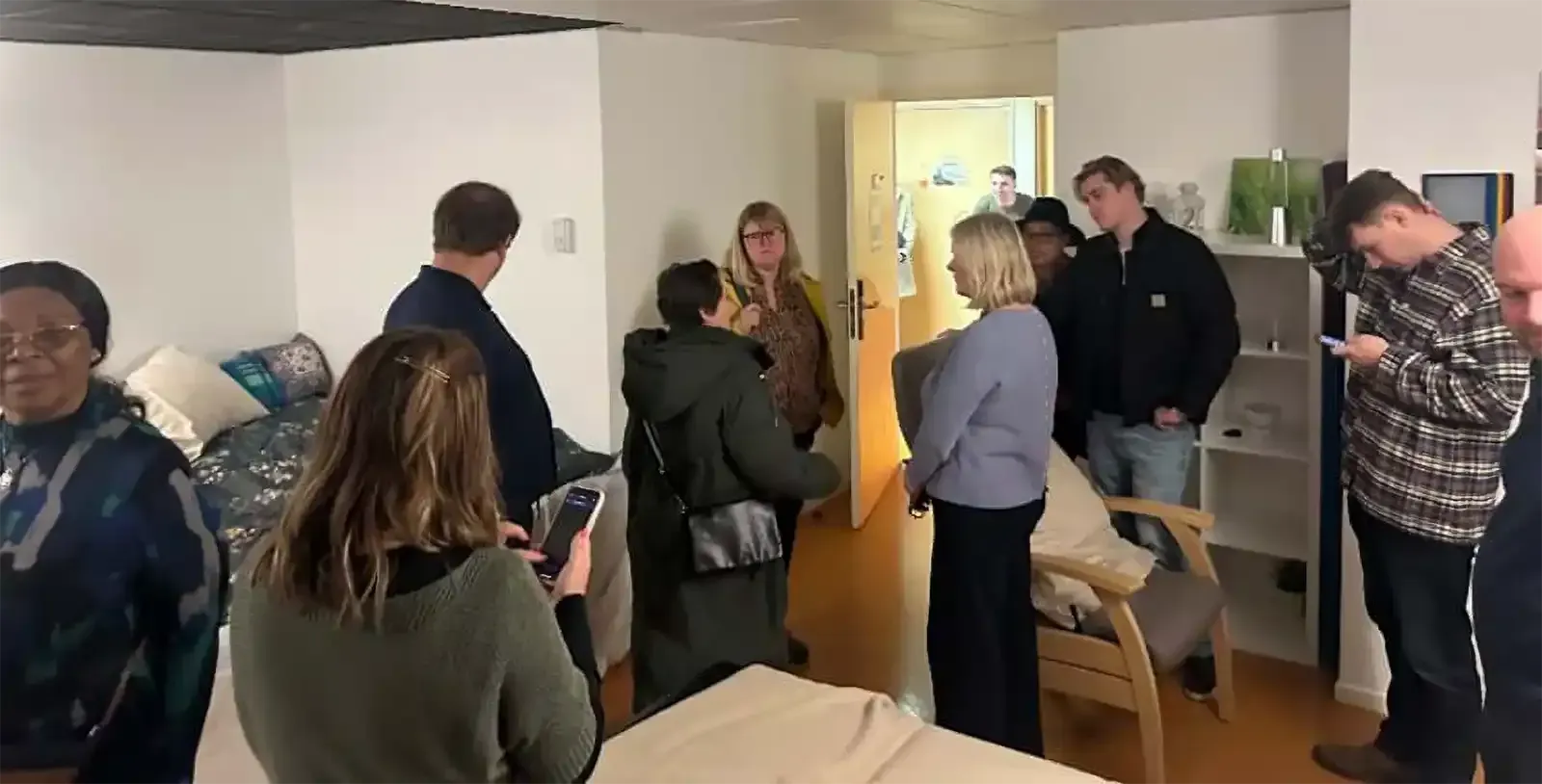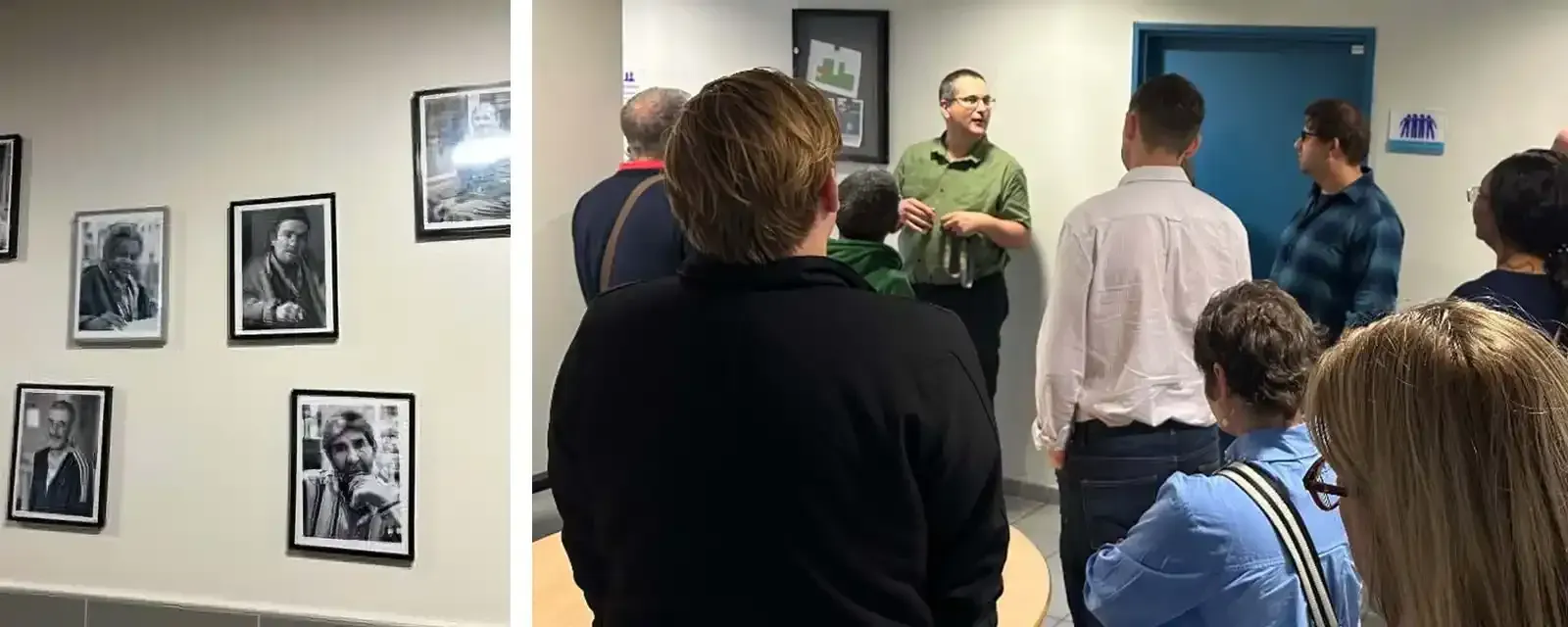Following a recent CIH International Housing Group visit to Lille in France, hosted by homelessness specialist Abej Solidarité, CHISEL Housing CEO Miles Lanham recounts some key learnings from the trip and explores how they might translate in a UK context. Could they also apply to Australasia?
Abej Solidarité is a third sector organisation that specialises in working with homeless people with mental health and other challenges in Lille. It piloted one of the French government’s Housing First Schemes in 2016, which was later adopted as the model for all of France.
During a CIH International Housing Group study trip earlier this month, Abej gave us a tour of their services, sharing insight into their innovative and valued work. They showed us around their night shelter, hostel, transitional housing and a cutting-edge specialist care centre for residents with dementia bought on by alcoholism, known as 'le korsakoff' (Wernicke-Korsakoff syndrome).
We also saw Abej’s newly opened day shelter and a specialist hospital for those experiencing street homelessness and referrals from their other services. There is an extensive outreach provision in Lille, too, and Abej is starting a specialist workstream with 18-to-25-year-olds.
The study group identified several approaches that are seldom experienced in the UK, but which would make a considerable difference in the fight against homelessness.
Joined-up services
Abej has developed a comprehensive range of support services for homeless people, which, with the provision of Housing First, provides an almost seamless journey from the street to being housed. The different areas talk to each other regularly and can prescribe the correct journey for their service users. The senior leaders have all recently moved from managing one area of provision to another, so they can foster learning and innovation from within the existing team.
Co-location of health provision
Abej co-locates healthcare professionals at any of its projects and ensures they are trained in working with homeless people, but also in understanding the distinct medical needs they might have. This is in stark contrast to the UK, where NHS services, even if funded by the local authorities, are not co-located with homelessness services, and are not involved in any meaningful way with outreach services.
Buildings are designed with humanity in mind
Abej has been able to commission and design most of its buildings to be human in scale, non-institutional, clean and bright, with use of colour as a trigger to people with the most severe mental health conditions. The residential sites have framed photographs of regular service users on the walls.
Non-judgmental ethos
Abej is a non-judgemental organisation that provides services to all street-homeless people. This approach is generally associated with Housing First, but Abej ensures its support across Lille is open to all, regardless of whether they have a substance dependency issue. There is no linking of support as a ‘reward’ for becoming clean.
Abej characterises its approach as ‘harm reduction’ so that, in the night shelter, for example, clean works are provided to drug users and condoms to sex-workers. In the new hospital, some medicines are kept in the fridge, alongside packs of lager.
Service users can work towards getting clean as part of their support programmes. Any drug or alcohol dependency is not a barrier to service – and pets are allowed as well.
Long-term approach
A common practice in the UK is to set time limits on service-users time spent in support programs or in supported or temporary housing. Abej does not apply these limits, believing that people heal at different speeds, especially if they have a history of long-term street sleeping. The commitment is to take the time needed to reach a longer term, more permanent solution for clients.
Person-centred provision
Abej’s organisational chart is circular and literally has a service user at the centre. There is little hierarchy, and most staff spend a substantial amount of their working week with their clients. The managers are also led by and listen to the frontline in how a client’s path is determined. The first question on all initial meetings with new clients is: ‘What is your dream – where would you like to go?’
One homeless person said they wanted to be a pilot on an aeroplane. They are now in housing and working at the local airport. For most, it’s the offer of a safe and warm place to sleep.
A commitment to experimentation
The CIH International Group has been visiting Lille since 2014, and each time has seen new innovations and provisions. This trip was no exception. Led by a resident and private investor, they have recently taken delivery of five ‘tiny homes’, which have been delivered to a site a small tram ride away from the city centre. These are run as a mini community for former street homeless people who are ready to live on their own.
We were also excited to learn about their work with younger people, which has had success in permanently preventing younger people from returning to sleeping rough.
It’s not just areas of service provision that have seen innovation, however. Within the schemes themselves, we witnessed a sensory room with massage table, music, coloured lights and a waterbed at the sheltered housing scheme for people living with Korsakoff. There was a club room at the hostel accommodation where cooking and nutrition could be taught, and outside of mealtimes, hairdressing and nail art.
There is an active approach to limit any barriers for innovation and to make changes where needed.
Understanding loneliness
One of the attractions of rough sleeping for some people is that it provides a community of sorts, especially if drug use involved. Recognising this, Abej realised the Housing First offer of a self-contained flat wasn’t always the goal for some clients and therefore developed other pathways to prevent loneliness (this is a particular guiding light in its transitionary housing).
Clients who can manage living in their own room and with fewer support needs have their own large bedsit, but in a safe building with 20 or so others, and with communal kitchens and shared spaces.
Collaboration and advocacy
Abej is a loud voice in the regional association of similar homelessness support providers. France is often faced with political changes and budget challenges, and the organisations in this area not only speak and lobby as one, but they provide an emergency service number so people can report themselves as homeless and the general public can get support for people they see rough sleeping. The other agencies are not competing for contracts in a chase to the bottom on price.
Lessons to take back home
While all the CIH study trips are designed to share best practice, the response from visitors to Abej Solidarite’s work was overwhelmingly positive.
Study group member Jonathan Horn – head of learning disability, autism and mental health commissioning at London Borough of Camden – said, “I was incredibly grateful for the opportunity to learn from Abej Solidaritie and see the impressive approach to Housing First in Lille.
“I was struck by how the relationship between housing and health ran through everything: the funding from government, policies, and the holistic delivery of services. It was also a good opportunity to reflect on what we do well here in the UK, despite the challenges we face.
“Lots of important lessons for us to learn... Long may it continue.”
Share This Article
Other articles you may like










